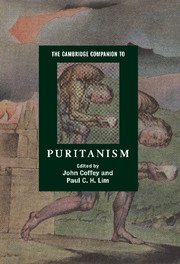Introduction
Published online by Cambridge University Press: 28 November 2008
Summary
In 1564, or thereabouts, the English discovered a new term of abuse - 'Puritan'. Initially, it was an insult launched at nonconformist clergy within the newly reformed Elizabethan church, zealous Protestants who refused to wear prescribed liturgical vestments, particularly the white surplice, and who gained a reputation as 'opposers of the hierarchy and church-service'. But soon the nickname was taken up by 'profane mouths', who deployed it rather indiscriminately 'to abuse pious people'. 'Puritan' became a handy smear word for bishops angered by clerical nonconformity, metropolitan playwrights provoked by censorious moralism, and villagers driven to distraction by assaults on traditional festive culture. By the early seventeenth century, Patrick Collinson explains, 'Puritanism' had become 'the brand name for a certain kind of Protestant religiosity, social conduct and politics'. The polemical origins of the term have troubled historians, and led some to call for the abolition of Puritanism as a historical category. Yet for most scholars of early modern England and New England, the concept has proved indispensable. As the American historian Michael Winship explains, Puritanism is 'an extremely convenient shorthand term', but one that 'is unavoidably a contextual, imprecise term, not an objective one, a term to use carefully but not take too seriously in itself'. Defining Puritanism has become a favourite parlour game for early modern historians. Some readers will be familiar with the discussion, but others may appreciate some basic orientation. The chapters in this collection offer different perspectives and approaches to the problem of definition, and together they build up a multifaceted picture of our subject. But we can begin by locating Puritans on the map of sixteenth and seventeenth-century European Christianity.
- Type
- Chapter
- Information
- The Cambridge Companion to Puritanism , pp. 1 - 16Publisher: Cambridge University PressPrint publication year: 2008
- 3
- Cited by



